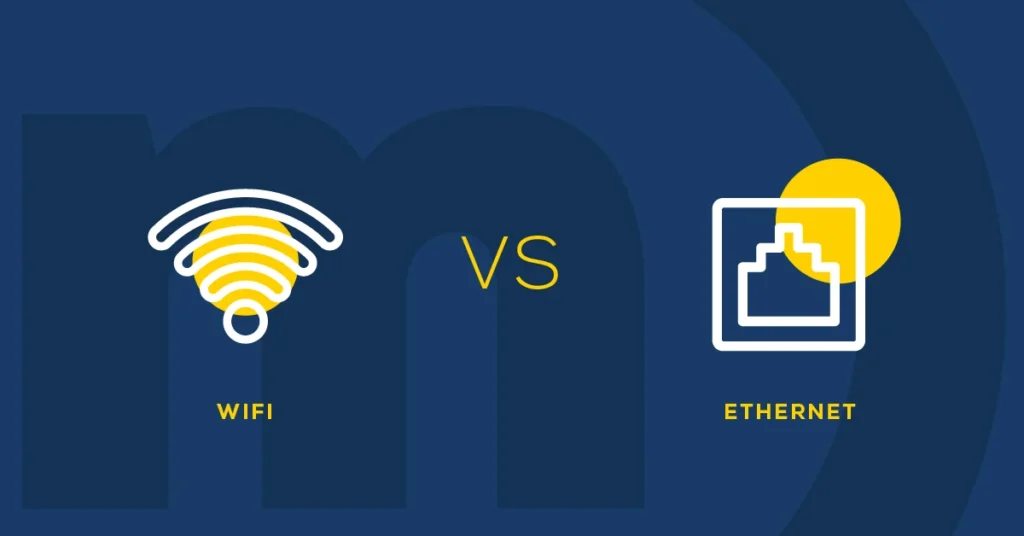Uncategorized
Ethernet Cable vs WiFi: Which Should You Choose?
Ethernet Cable vs WiFi: Which Should You Choose?
In Kenya’s digitally evolving landscape, a robust internet connection is essential for both homes and businesses. The dilemma of choosing between a wired connection using an Ethernet cable and a wireless one via WiFi is a common one, with each option offering distinct advantages and trade-offs. Your final choice should be guided by your specific needs for speed, stability, security, and mobility.
Speed comparison: Ethernet vs. WiFi in the real world
While modern WiFi technologies like Wi-Fi 6 offer impressive theoretical maximum speeds, Ethernet cables generally provide faster and more consistent real-world performance.
| Aspect | Ethernet | WiFi wireless access points |
| Data transfer | Data travels through a dedicated physical cable, preventing signal degradation over distance. | Data travels via radio waves, making the signal susceptible to weakening and interference. |
| Performance | Wired connections are less prone to speed fluctuations, ensuring you get the bandwidth your internet service provider (ISP) promises. | Speeds can vary based on distance from the router, physical obstructions like walls, and interference from other devices. |
| Lag (Latency) | Ethernet provides significantly lower latency, the time it takes for data to travel to a server and back. This is crucial for real-time applications. | Wireless signals have higher latency, which can cause noticeable delays, especially in fast-paced online activities. |
Reliability and stability
For a mission-critical or high-demand connection, Ethernet is the clear winner for stability.
- Ethernet: Offers a highly stable and reliable connection, virtually immune to wireless interference from other electronics or neighboring networks. This means fewer dropped connections and a more consistent experience.
- WiFi: Wireless connections are more prone to signal drops and instability. Environmental factors, network congestion from multiple users, and physical obstacles can all cause performance issues.
Security considerations
When it comes to network security, Ethernet holds a significant advantage.
- Ethernet: A wired connection is inherently more secure, as it requires a physical connection to your network to access data. This eliminates the risk of unauthorized external parties intercepting data transmitted through the airwaves.
- WiFi: Because wireless signals are broadcast openly, they are more vulnerable to security breaches. Intercepting data is more feasible without physical access, though strong encryption protocols like WPA3 offer robust protection.
Gaming, streaming, and work use cases
The best connection depends on how you use the internet.
- For high-demand activities: For competitive gaming, live streaming, or remote work that involves large file transfers and video conferencing, Ethernet is the superior choice. Its low latency and consistent speeds ensure a smooth, lag-free experience where every millisecond counts.
- For general use: For casual gaming and streaming, a modern, well-placed WiFi connection is often more than sufficient. You can stream 4K video reliably over WiFi, though an Ethernet cable is still the most dependable option for eliminating buffering.
- For work-from-home (WFH): A reliable connection is crucial for WFH setups. While WiFi can work, using Ethernet for your work computer ensures consistent speeds for video calls, large downloads, and access to corporate networks, preventing mid-meeting freezes.
For more information on maximizing performance for specific applications, check out our guide on the “Best Ethernet Cable for Gaming” to find the right cable category for your needs.
When WiFi is better: Flexibility and mobility
For all its performance benefits, Ethernet’s main drawback is its lack of mobility.
- Device mobility: WiFi is essential for portable devices like smartphones, tablets, and laptops. It allows you to move freely around your home or office without being tethered by a cable.
- Convenience: Setting up a WiFi network is quick and easy, with no need for extensive cabling or complex installation. It is ideal for households with many devices were running dedicated cables is impractical.
Best of both worlds: Hybrid setups
The most effective solution for most modern homes and offices is a hybrid network that uses both Ethernet and WiFi.
- Fixed devices: Connect stationary, high-bandwidth devices—such as desktop computers, smart TVs, and gaming consoles—directly to the router using an Ethernet cable. This provides the best possible speed, stability, and security for your most demanding activities.
- Mobile devices: Use WiFi for portable devices that need to move around freely, such as phones, tablets, and laptops.
- Extend your network: If you need to extend a wired connection to an area far from the router without running a long cable, consider using power line adapters or mesh WiFi systems.
Conclusion
The wired vs. wireless debate is not about which technology is inherently “better,” but which one best suit a specific purpose. For critical, high-performance tasks like serious online gaming, high-definition streaming, and transferring large work files, Ethernet is the undisputed champion for speed, stability, and security.
However, for convenience, mobility, and everyday browsing, WiFi is more than sufficient for most Kenyan homes and offices. By adopting a hybrid approach, you can leverage the strengths of both technologies to build a robust and reliable network that meets all your needs.


